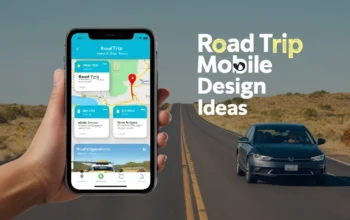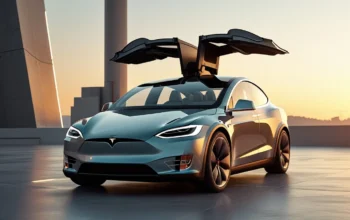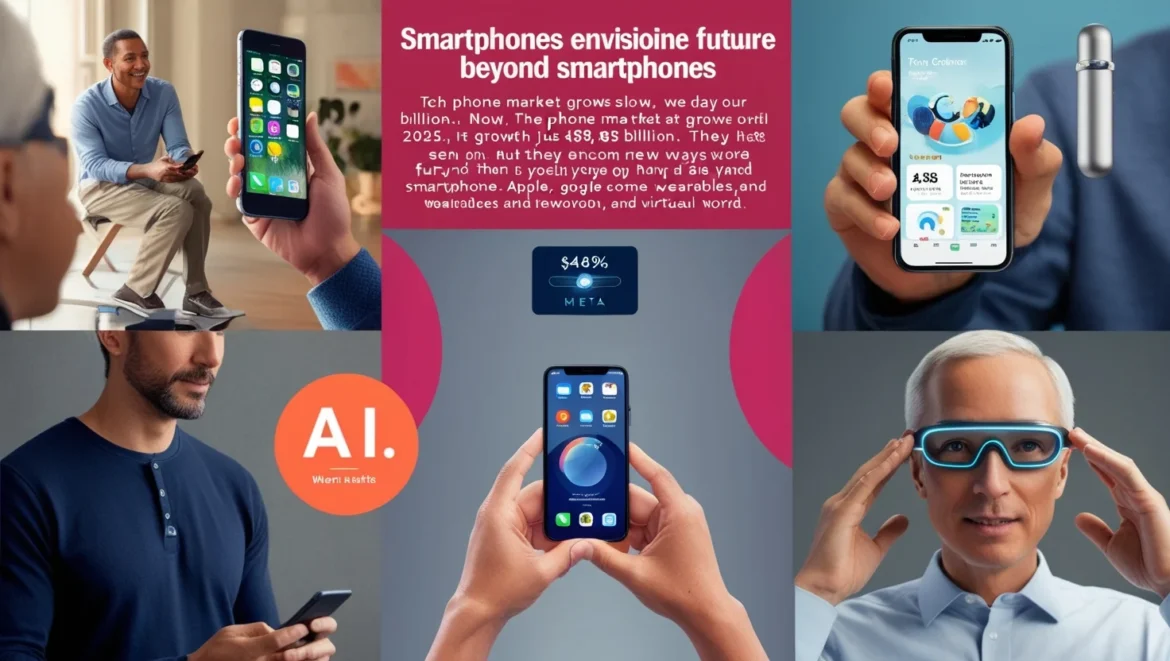
Smartphones changed our world. We talk, play, and work on them every day. But now, the phone market grows slow. In 2025, it hits about $485 billion. Growth is just 3.8% each year until 2030. Tech giants see this. They plan new ways to connect us. Tech giants envision future beyond smartphones with cool tools like glasses that show info on the real world.
Or devices that read our thoughts. Apple, Google, Meta, and others spend billions. They bet on AI, wearables, and virtual worlds. This shift excites many. It promises hands-free fun. But it brings questions, too, like privacy and new habits. Let’s dive in. We will look at what comes next. You will see real examples and tips. Get ready for a fresh tech ride.
The Shift to Wearable Tech Ecosystems
These are gadgets we wear. They link together. For example, smartwatches track health. They talk to other devices. Apple leads here. Their Apple Watch checks their heart rate. It sends alerts. Now, they add more AI. Google follows suit. Their Pixel Watch uses Gemini AI. It gives smart tips like when to exercise.
Wearables grow fast. By 2028, AR glasses will ship 87 million units. Why? People want a hands-free life. Surveys show 68% like that. Amazon makes Echo Frames. They play music. Answer questions. No phone needed.
How Wearables Change Daily Life
Imagine waking up. Your watch knows your sleep. It plans your day. Meta’s Ray-Ban glasses sold over 1 million. They take photos. Play calls. But watch battery life. 89% want better ones. Tip: Charge at night. Use low-power mode.
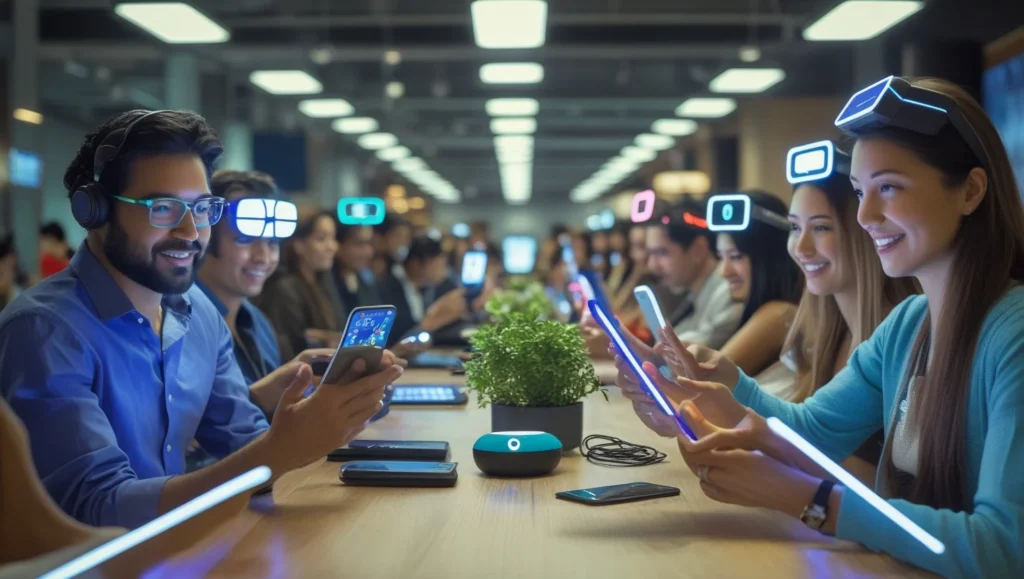
Augmented Reality Glasses as the New Screen
These look like normal specs. But they show maps or messages. Apple plans Apple Glass for 2026. It links to your iPhone. Google works on Project Astra. It uses AI for AR help.
Meta pushes hard. They spent $50 billion on AR since 2019. Their Orion glasses show holograms. Mark Zuckerberg says glasses will replace phones by 2030. Why? Phones make us look down. Glasses let us see the world.
Real-World Uses for AR Today
Walk in a city. Glasses show directions. No pulling out the phone. At work, Microsoft HoloLens helps train workers. It shows 3D models. Tech giants envision future beyond smartphones with fun too. Play games in your room. But privacy matters. 74% worry about cameras. Tip: Check settings. Turn off when not needed.
AI-Powered Assistants Evolve Communication
AI helps us talk and do tasks. No more typing. Just speak. Apple upgrades Siri with AI. It sums up emails. Makes images. Google’s Gemini does homework help.
These AIs move to wearables, like necklaces or pins. Humane AI Pin tried this. It answers questions. Takes notes. But some failed. They lacked full power. OpenAI plans a new one. It could add $1 trillion in value.
Tips for Using AI Helpers Safely
Start simple. Ask for the weather. Then recipes. Tech giants envision future beyond smartphones with AI everywhere. But check facts. AI can err. For privacy, use on-device AI like Apple. It keeps data safe. By 2025, the AI market will hit $244 billion.
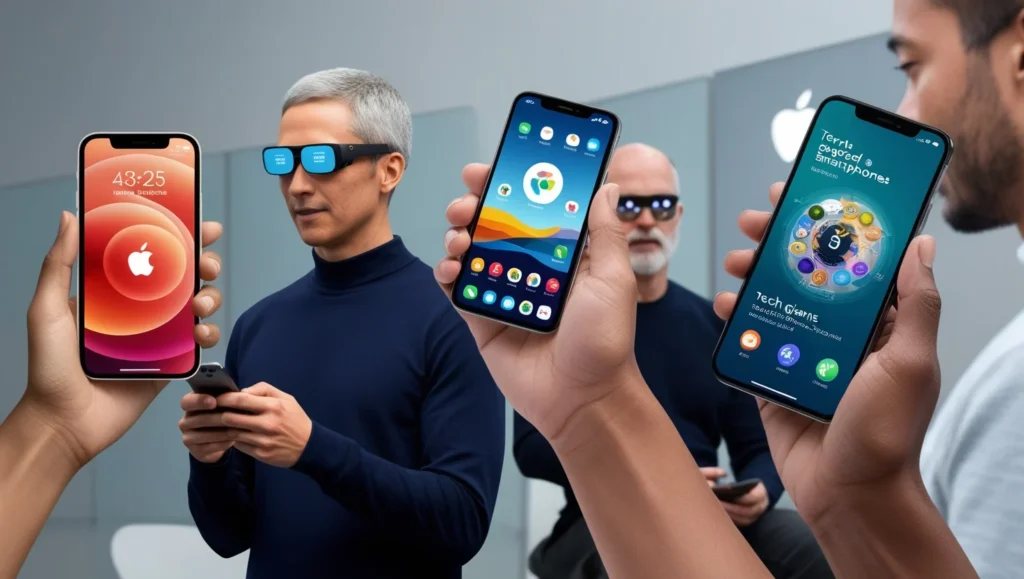
The Metaverse and Virtual Worlds Expand
The metaverse is a digital space. We meet, work, and play there. Tech giants envision future beyond smartphones in this world. Meta leads. They changed their name from Facebook. Invest billions. Their Quest headsets let you enter VR. But only 7.7 million mixed reality sets were sold last year.
Apple joins with Vision Pro. It blends real and digital. Watch big movies. Work on huge screens. It has 23 million pixels. Feels magic. Google plans XR platforms.
Building Communities in the Metaverse
Meet friends far away. Shop virtual clothes. But it’s niche now. Tip: Try free apps like Roblox. Learn the basics. Watch for eye strain. 45% report it.
Brain-Computer Interfaces Unlock New Potentials
Brain-computer interfaces, or BCIs, link minds to machines. Tech giants envision future beyond smartphones with this. Neuralink, from Elon Musk, leads. They implant chips. Control computers with thoughts. In 2024, they spent $1.8 billion. Plan 27 implants in 2025.
It helps people like those who can’t move. Restore motion. Memory too by 2026. The market is expected to grow to $25 billion by 2030.
Ethical Thoughts on Brain Tech
Share feelings? Yes, possible. But scary. 74% worry about privacy. Tech giants envision future beyond smartphones carefully. Tip: Read the news. Know risks. Start with non-invasive tools, like headbands.
Internet of Things Connects Everything
IoT means devices talk to each other. The lights turn on alone. Fridges order food. Amazon’s Alexa runs this. Google Home, too.
By 2030, IoT will grow big. Links to AI. Makes life easy. For example, your watch tells the fridge you need milk. 6G networks help. Faster connections.
Setting Up Your Smart Home
Start small. Buy a smart bulb. Connect to the app. Tech giants envision future beyond smartphones integrated. But secure it. Change passwords. Hackers lurk.
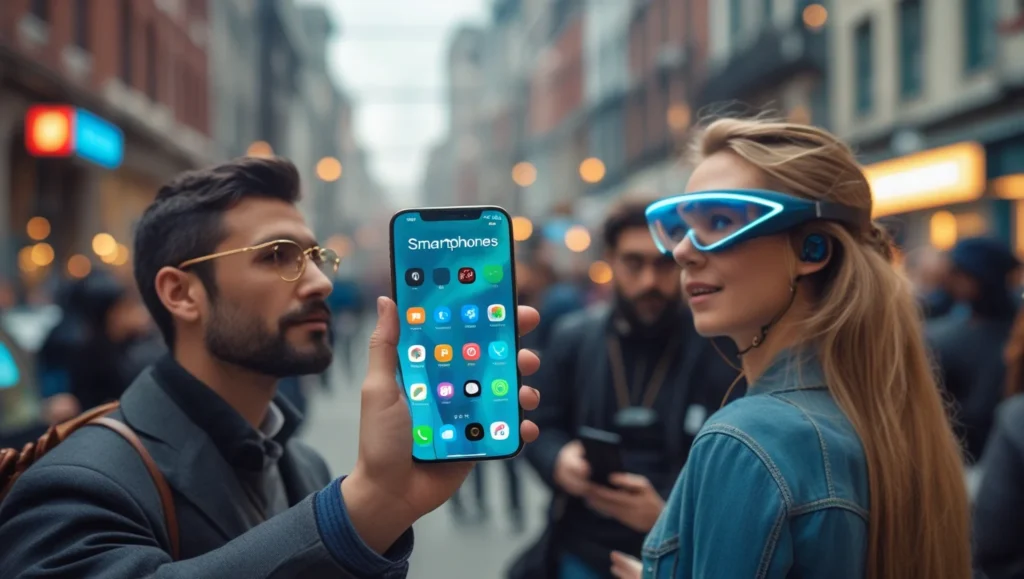
Challenges in the Post-Smartphone Era
Tech giants envision future beyond smartphones. But hurdles exist. Prices high. Vision Pro costs $3,499. Not everyone buys. Social rules change. Glasses with cameras? Some ban them.
Health too. Eye strain is common. Privacy big issue. 68% worry about AI listening. Tech giants work on fixes, like better laws.
FAQs
What is Apple’s role in the future beyond smartphones? Apple pushes spatial computing with Vision Pro, blending digital and real worlds for work and fun.
How does AI fit into post-smartphone tech? AI powers assistants in wearables, making them smart and hands-free for daily tasks.
What challenges face the future beyond smartphones? Privacy, high costs, and health issues like eye strain slow the adoption of new gadgets.
Key Citations
- Coruzant: Tech Giants Envision Future Beyond Smartphones
- Humanity Redefined: What Comes After the Smartphone?
- Apple: Apple Vision Pro
- Statista: Smartphones Worldwide Market Forecast
- New York Times: Welcome to the Era of the AI Smartphone
- Nextpit: Smartphones Outdated by 2030?
- McKinsey: Technology Trends Outlook 2025
Read More: Meta Stock

